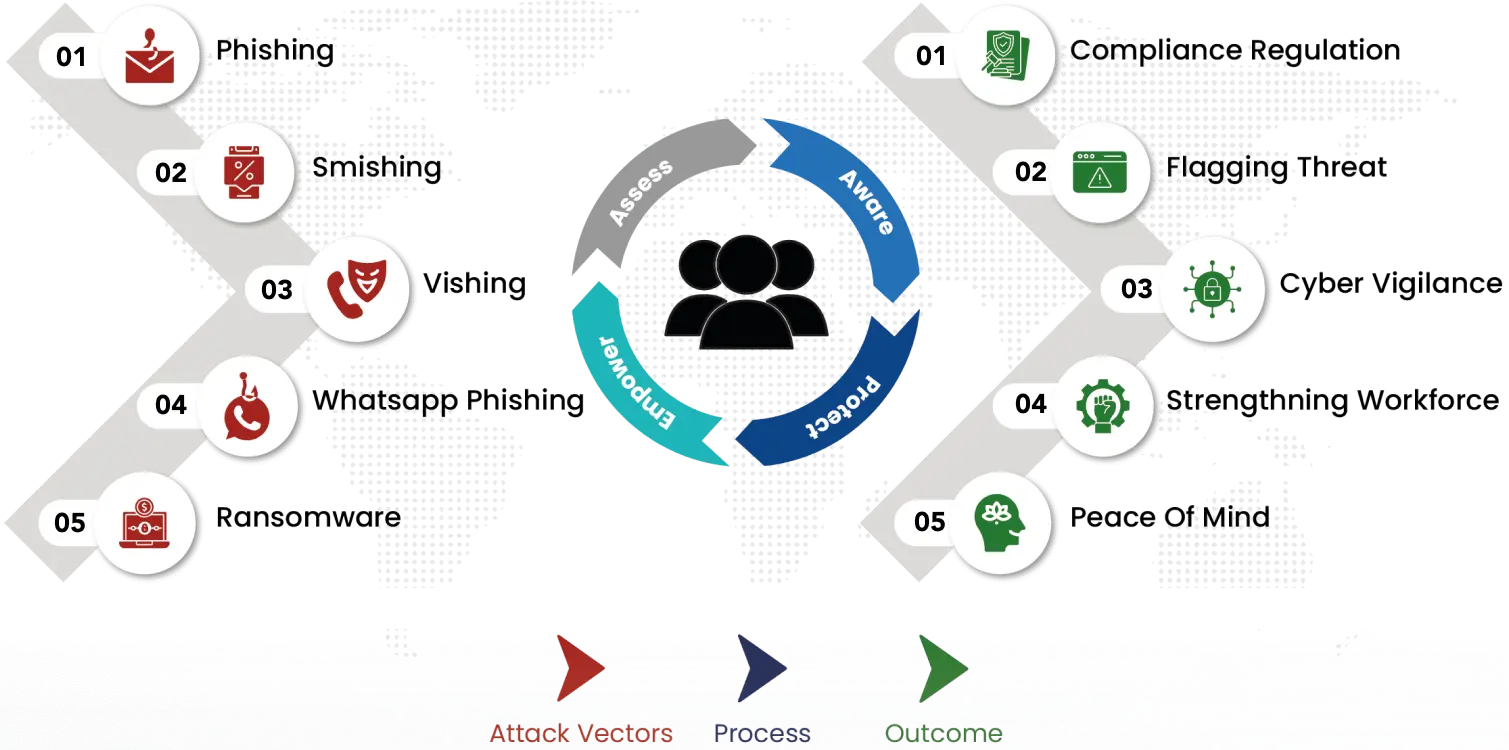The digital landscape of the modern workplace is fraught with potential cyber threats. From phishing scams to data breaches, the risks are ever-present and continually evolving. This is why security awareness training for new employees isn’t just a formality—it’s a necessity. Let’s unravel the reasons why embedding this training into the onboarding process is non-negotiable for maintaining a secure business environment.
A Warm Welcome That Wards Off Threats
As fresh recruits come aboard, brimming with enthusiasm and potential, they also bring with them an inherent vulnerability to cyber threats. Without the proper orientation into the company’s cybersecurity protocols, new hires are easy targets for cyber adversaries. Security awareness training equips these individuals with the knowledge and reflexes to recognize, report, and react appropriately to cyber threats, transforming them from potential weak links into strongholds of your cybersecurity defense.
Building a Culture of Cyber Vigilance
Security awareness training goes beyond teaching best practices; it’s about fostering a culture where every employee, regardless of their position, becomes a vigilant sentinel. When new hires are trained from day one, it sets a precedent, reinforcing the idea that security isn’t just the IT department’s responsibility—it’s everyone’s business. This collective mindset is critical in creating an environment where security protocols are followed not out of obligation, but out of a shared commitment to protect the organization’s assets.
Book a Free Demo Call with Our People Security Expert
The Ripple Effect of Security Education
Knowledge is most powerful when shared. New employees who are well-versed in cybersecurity become conduits, spreading awareness among colleagues and promoting a continuous exchange of insights. As they grow within the company, these individuals carry forward the torch of security, ensuring that the flame of vigilance never dims.
Engagement: The Key to Effective Learning
Security awareness training must engage employees. Dry, monotonous lectures will have new hires tuning out faster than you can say “password complexity requirements.” Instead, opt for interactive sessions that include real-life scenarios, gamification, and hands-on exercises. Engage them with stories that illustrate the catastrophic consequences of a security lapse, and empower them with the knowledge that their actions can prevent such incidents.
Security Simulations: Practice Makes Perfect
Merely knowing about potential threats isn’t enough. New hires need to practice their responses in simulated environments. Role-playing exercises that mimic phishing attacks, for instance, can teach employees how to scrutinize emails critically and avoid clicking on suspicious links. These simulations can be both an eye-opener and a confidence booster, ensuring that when faced with the real deal, your employees are ready.
Regular Refreshers: Keeping Knowledge Current
The cyber threat landscape is constantly shifting, and so should your training. Regular updates and refresher courses for all employees, including those who are new, keep the information current and top of mind. This ongoing education can adapt to the latest threats and reinforce the importance of cybersecurity, making it a regular rhythm of your corporate life.
Personal Benefits: Beyond the Office Doors
Security awareness training isn’t just beneficial for protecting company assets; it’s also valuable in the personal realm. Employees who understand how to secure their work data are more likely to implement the same practices at home, protecting their personal information from cyber threats. This personal investment in cybersecurity can lead to more diligent practices in the workplace.
Understanding People Security Management
Before diving into training specifics, it’s vital to understand People Security Management (PSM). PSM is a comprehensive approach that involves educating and empowering your staff to recognize and mitigate cybersecurity threats. It’s a proactive defense mechanism, turning your workforce into an informed shield against potential breaches.
The Critical Role of Security Awareness Training
Building a Human Firewall
The first line of defense against cyber threats isn’t always technological—it’s human. Security awareness training transforms new employees into vigilant gatekeepers who can detect phishing scams and suspicious links, effectively acting as a human firewall.
Creating a Culture of Security
Consistent training instills a security-first mindset. By incorporating PSM principles, new staff members are not just learning about security; they’re absorbing the culture. This cultural shift is essential for maintaining long-term vigilance.
Complying with Regulatory Standards
Regulatory bodies often mandate security training. By embedding PSM into your onboarding process, you’re not only aligning with these regulations but are also demonstrating to stakeholders that your business prioritizes data protection.
Protecting Against Social Engineering Attacks
Social engineering is a sophisticated threat that manipulates employees into divulging confidential information. Security awareness training, particularly through PSM, teaches new hires to recognize and respond to these manipulative tactics.
Mitigating Insider Threats
Not all security threats are external. Sometimes, they come from within. Comprehensive security training ensures new employees understand the implications of their actions, reducing the risk of accidental internal threats.
Enhancing Response to Security Incidents
When a security incident occurs, the response time is critical. Well-trained employees can act swiftly and effectively, minimizing potential damage. PSM educates them on the protocols to follow, ensuring a quick and coordinated response.
Updating Knowledge on Emerging Threats
The cyber threat landscape is ever-evolving. Regular training updates are a core part of PSM, ensuring that employees’ knowledge stays current and effective against the latest threats.
How People Security Management Enhances Training
Integrating PSM into security awareness training ensures that the program is personalized, engaging, and relevant. PSM tools can track progress, adapt learning paths based on performance, and provide real-life scenarios that resonate with new employees, solidifying their understanding and retention.
Conclusion
Security awareness training for new employees is an investment in your company’s future. By leveraging People Security Management, you’re not just educating; you’re empowering your workforce to be an active part of your cybersecurity defense strategy. It’s time to embrace this training as an indispensable element of your security posture.

Technical Content Writer at Threatcop
Ritu Yadav is a seasoned Technical Content Writer at Threatcop, leveraging her extensive experience as a former journalist with leading media organizations. Her expertise bridges the worlds of in-depth research on cybersecurity, delivering informative and engaging content.
Technical Content Writer at Threatcop Ritu Yadav is a seasoned Technical Content Writer at Threatcop, leveraging her extensive experience as a former journalist with leading media organizations. Her expertise bridges the worlds of in-depth research on cybersecurity, delivering informative and engaging content.

